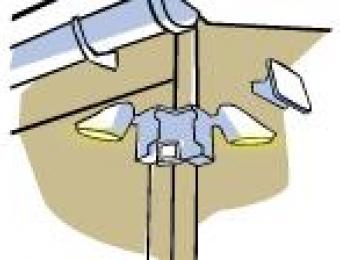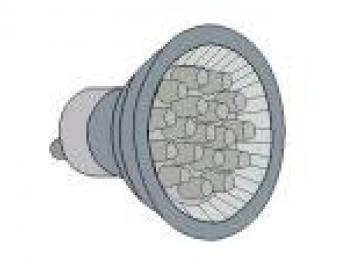
Landscape lighting allows you to extend the flow and décor of your home to the garden. It can even make your indoors feel larger. Without outside lighting, windows tend to reflect interior lights, which invariably makes the space seem smaller.
When the sun goes down, outdoor lighting can create its own dramatic effects by accentuating features such as statuettes, intricate patterned surfaces, pools and ponds, and plant life – both with light and with strategically planned shadows.
Security and entertaining
As well as being decorative, landscaping and garden lighting can also be used for functional purposes – if you like entertaining outdoors, a proper lighting landscape can make your entertaining area warm and inviting, or provide brighter areas in which to barbecue and prepare food.
Well planned landscape and garden lighting may also work to supplement your security system, as it has the potential to immediately change a space filled with darkness and shadows to one bathed in light. But as they say, sometimes less is more.
Landscaping and garden lighting design fundamentals
The first and most important aspect of landscape and garden lighting is safety. This mostly boils down to ensuring that walkways, steps, doorways and obstacles are clearly lit. Beyond this, much of how you choose to light your garden comes down to your own willingness to experiment.
Experimenting with landscaping and garden lighting
On walkways, try using lights along just one edge of pathways to add safety, security and visibility for walking. Use indoor accent lighting techniques to highlight a tree, feature wall or fountain, or use fixtures mounted high above the ground to create a spotlight effect. You may wish to try using a spotlight to accent a tree from below - or from above. Consider where the light ends up and the effect that it has either on the foliage or the ground.
If you have specific features in your garden, you may try using lighting to create a focal point, like a spot light. If you wish to do this, using two or more fixtures focused on a single area from different directions will add dimensionality.
Another thing to consider, thanks to modern light emitting diodes (LEDs), is that your outdoor lighting can change colour. You can even use these in your swimming pool to make it a light feature in its own right. The best thing about landscape lighting is that in most cases it's very forgiving. It will allow you to attempt many different styles and if you're unsatisfied, you can usually just move things around and experiment.
- Start with safety – walkways and stairs are especially important outdoors.
- When accent lighting, use several medium-powered lamps rather than one or two more powerful lamps. This will reduce glare and big dark shadows.
- You are much more likely to add lights in future than to remove them, so plan for a system that can be expanded.
- Mix your lighting techniques.
- Remember that 'more' is not always better, and nor is 'more expensive'.
- ONLY use lights that are designed for use outdoors. In most cases these should be rated to IP67 or better.





